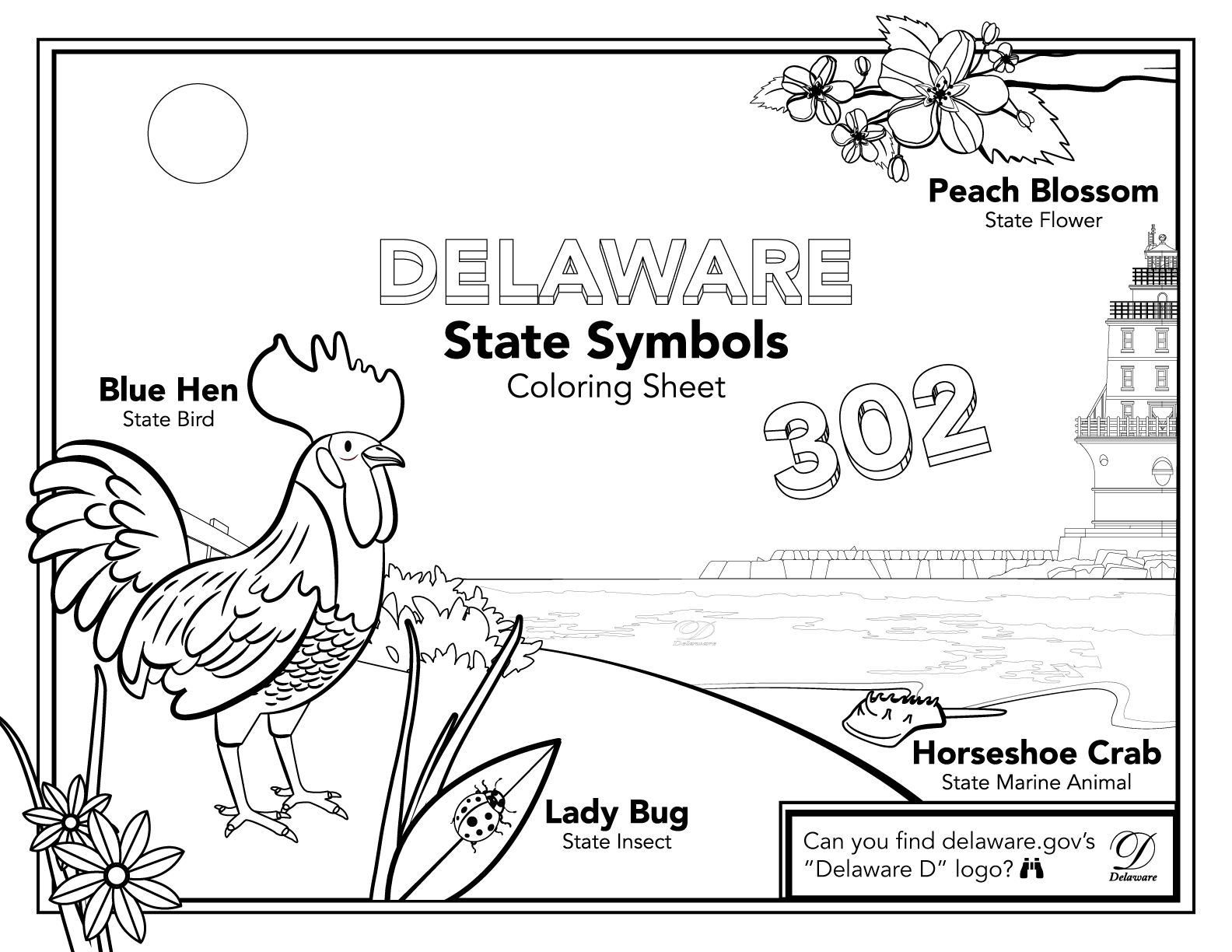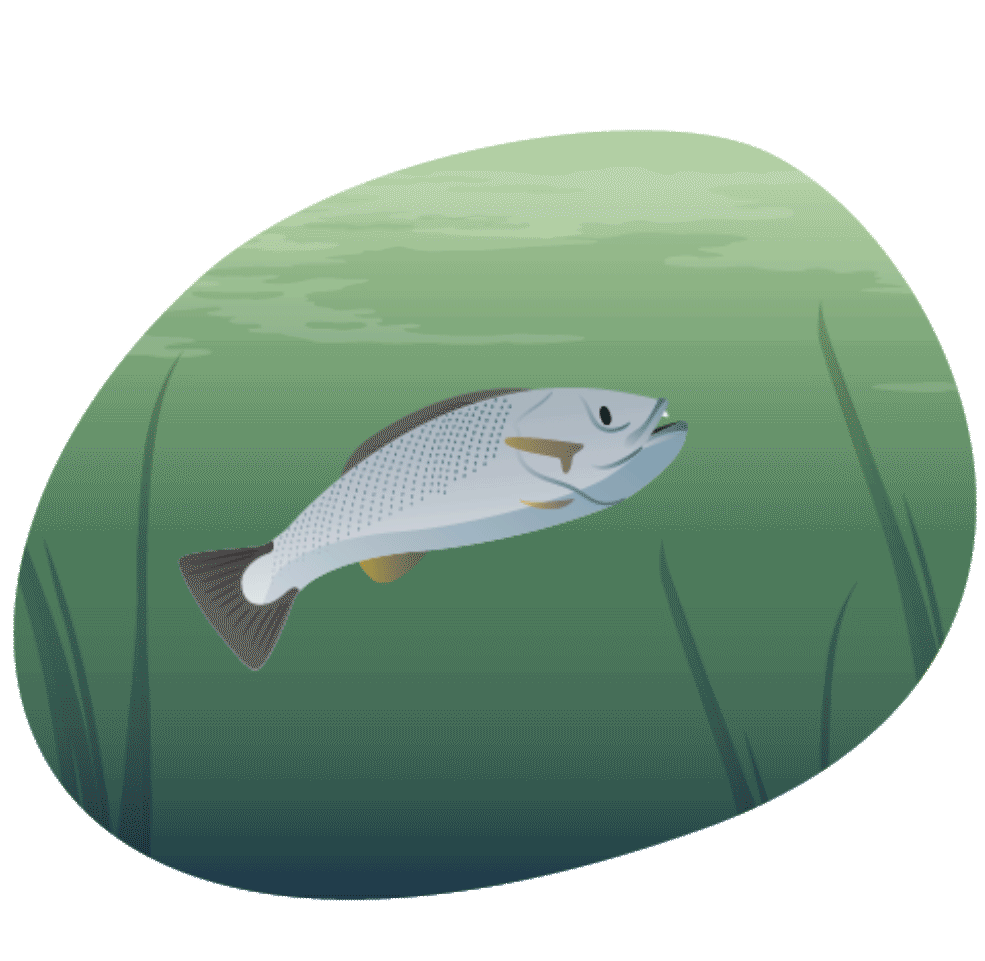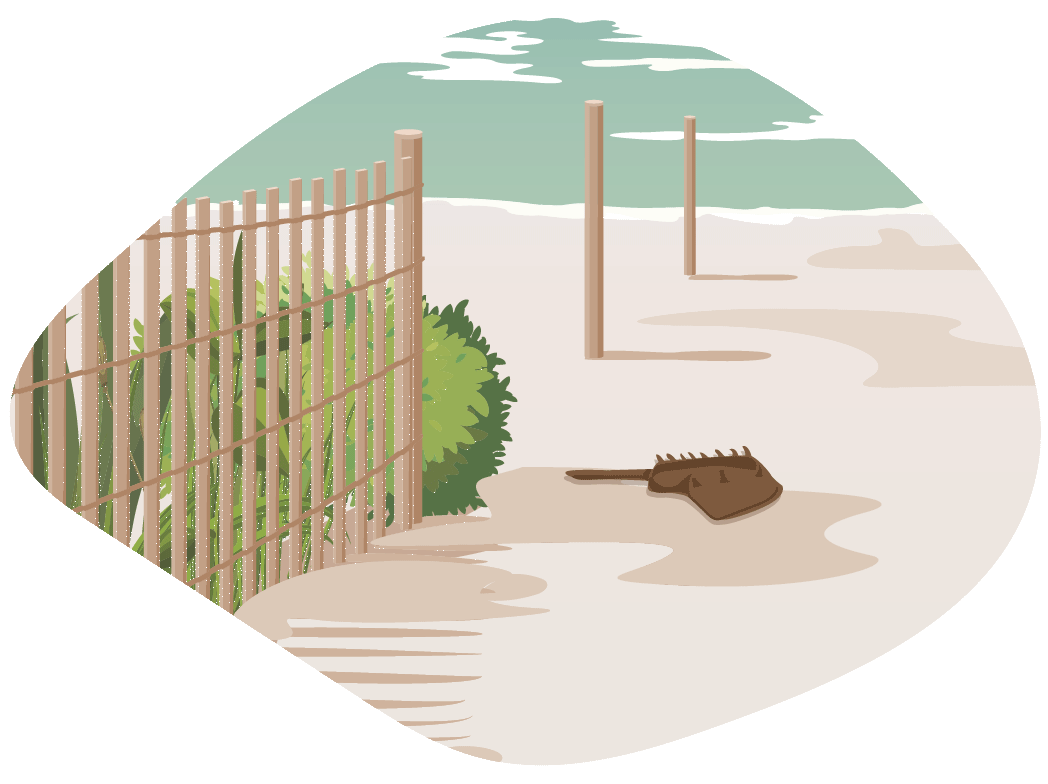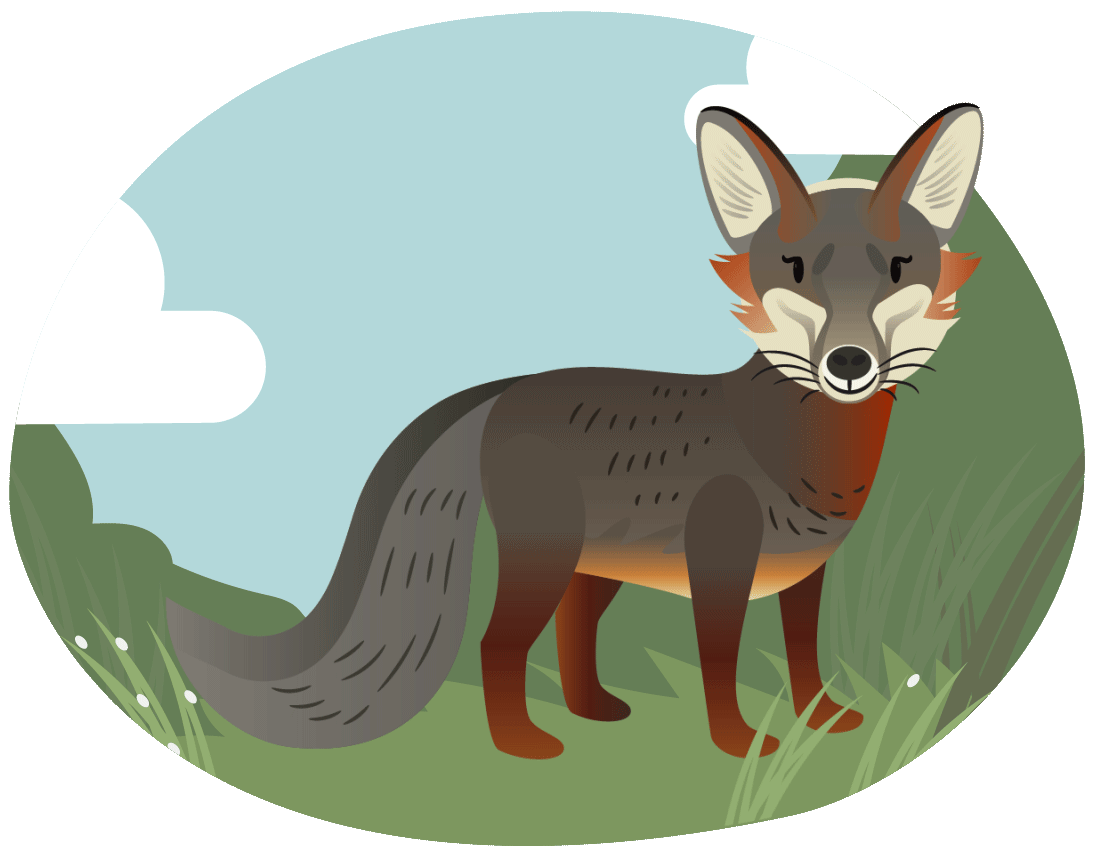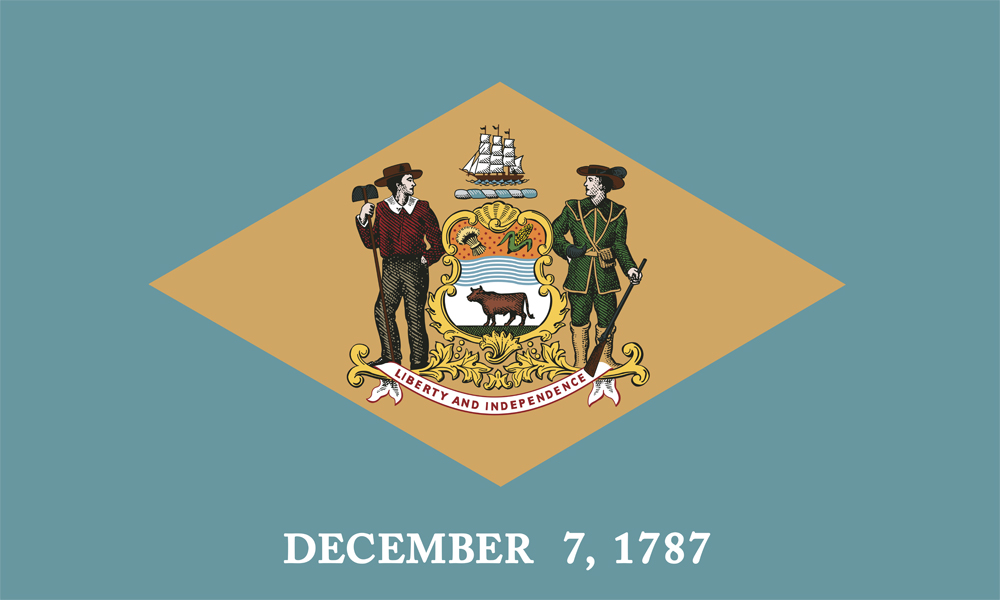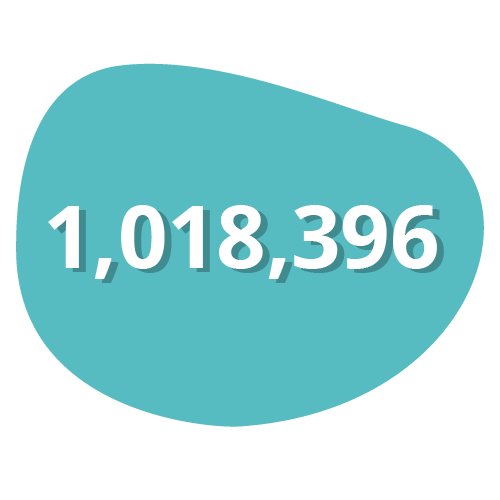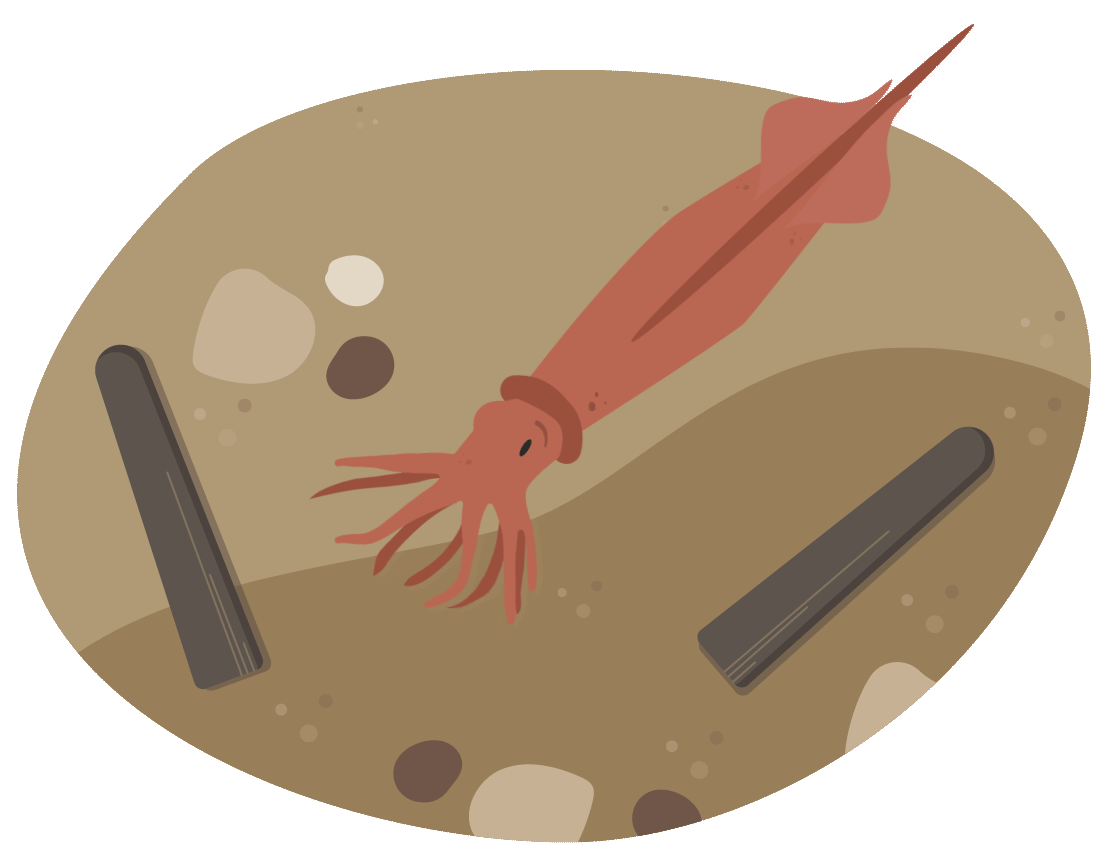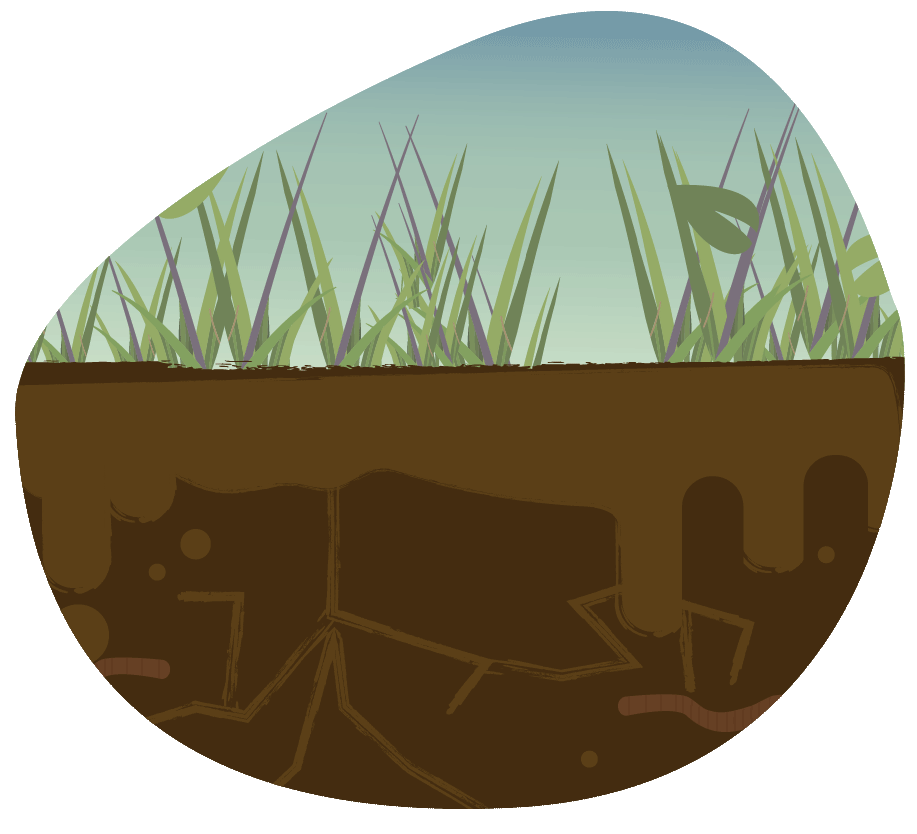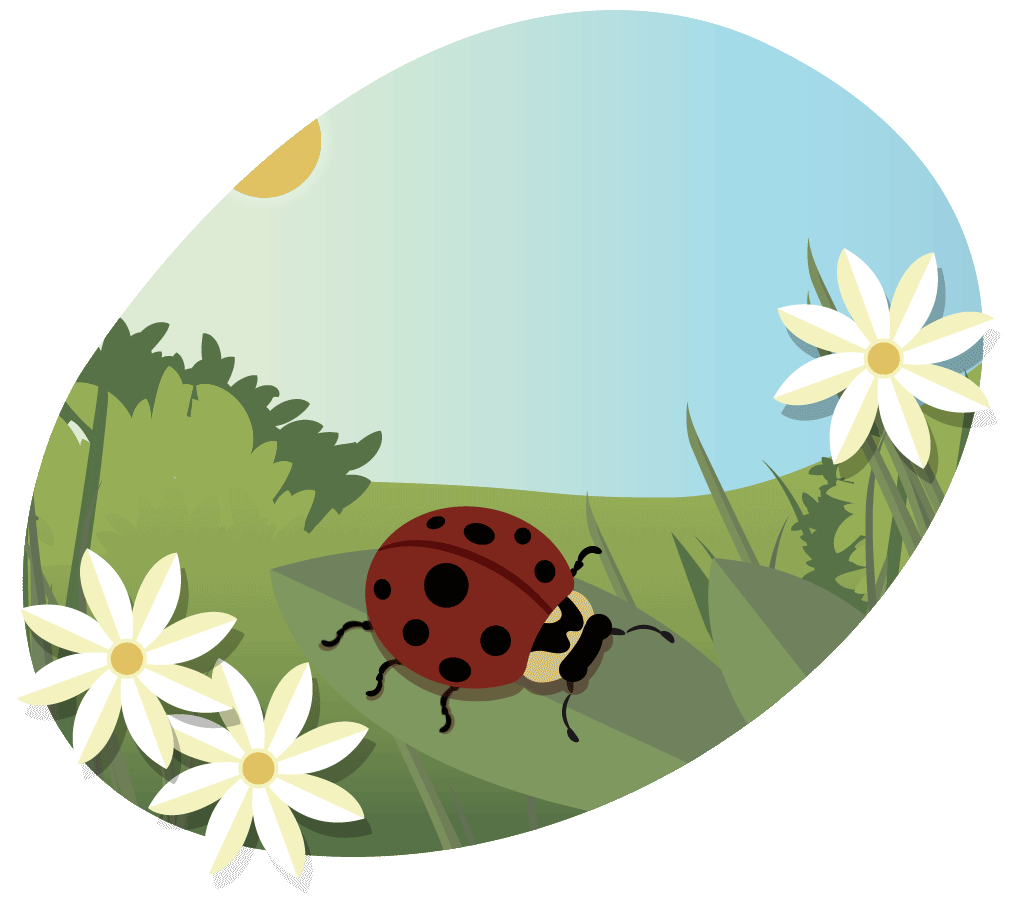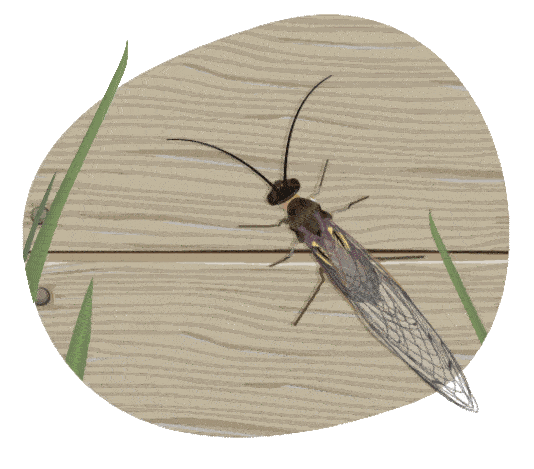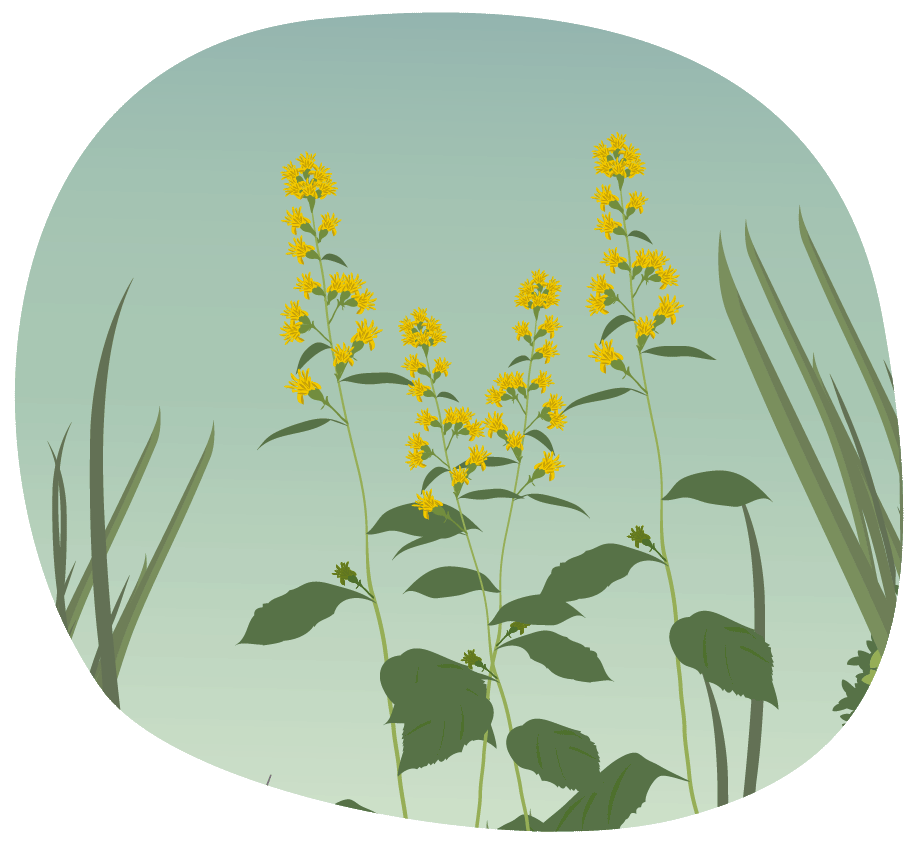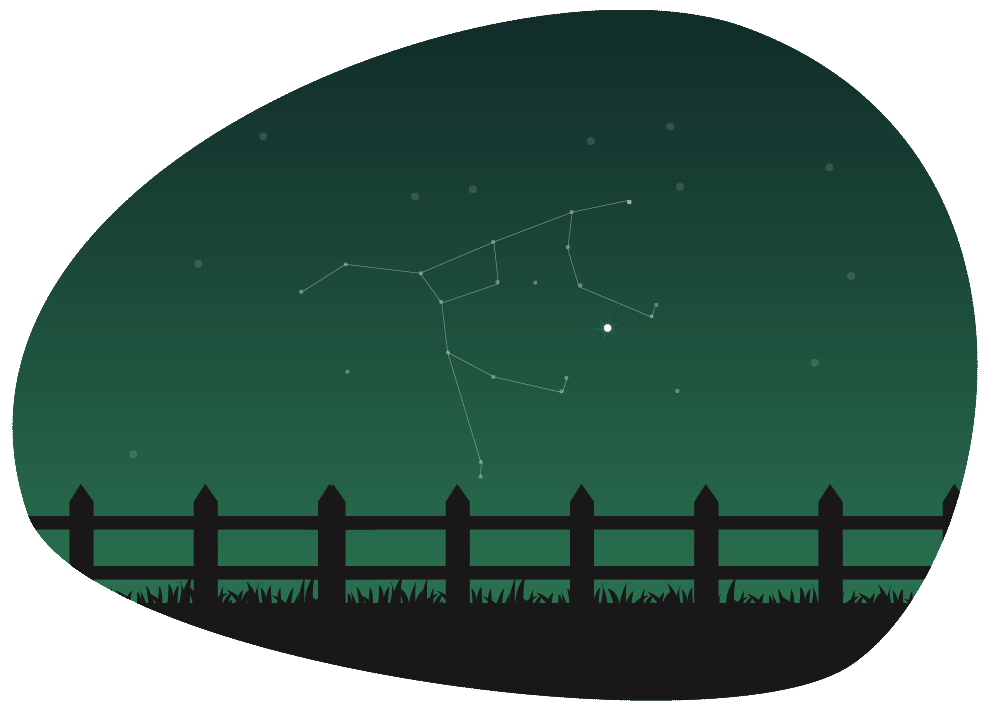Facts & Symbols
Discover what makes the First State unique. Learn the origins and adoption of state symbols and facts. Read the history and traditions which influenced the selection of each fact.
If you or someone you know many have any other additional Delaware facts we would like to hear from you.
302 Creative!
We have designed a Delaware themed coloring page! Feel free to print or color digitally! Share your work with us on by using the hashtag #ThisIsDelaware.
Animals
State Bird:
Blue Hen
Adopted on April 14, 1939, the Blue Hen chicken had long been used as a motif in numerous political campaigns and in many publications. During the Revolutionary War, the men of Captain Jonathan Caldwell's company, recruited in Kent County, took with them game chickens that were said to be of the brood of a famous Blue Hen and were noted for their fighting ability. When not fighting the enemy, the officers and men amused themselves by pitting their Blue Hen chickens in cockfights. The fame of these cockfights spread throughout the army and when in battle, the Delaware men fought so valiantly that they were compared to these fighting cocks.
Delaware Code Title 29 § 304
State Dog:
Rescue Dogs
Signed on May 15, 2019, the state dog of Delaware is rescue dogs. There are many animal welfare agencies in the State of Delaware who are proud to provide care for these homeless dogs, striving to enhance the well-being of companion animals and committing to ending pet overpopulation. Animal shelters and rescue groups are brimming with happy, healthy dogs just waiting for someone to take them home.
Note: Senate Bill 37, an amendment to Title 29 § 327 was signed in May 30, 2023 designating the rescue dogs as the official state dog. The original bill was set to expire in 2020.
Delaware Code Title 29 ; Senate Bill 37
State Fish:
Weakfish
In recognition of sport fishing’s overall recreational and economic contributions to the state of Delaware and of the specific values of the weakfish (Cynoscion genus) as a game and food fish, the state Legislature adopted the weakfish as Delaware's State fish in 1981. This fish is also known as sea trout, gray trout, yellow mouth, yellow fin trout, squeteague, and tiderunner.
Delaware Code Title 29 § 311
State Marine Animal:
Horseshoe Crab
Recognizing its great importance and value, the horseshoe crab was designated as Delaware’s official marine animal on June 25, 2002. These invertebrates contain a compound, limulus amebocyte lysate (LAL), that is used to detect bacterial poisons in certain medications, vaccines and medical devices. Chitin, a natural polymer found in the horseshoe crab’s shell, is used to make bandages. The horseshoe crab is used in vision studies, because their complex eye structure is similar to the human eye. It is the principal food source for over a million shore birds. Delaware Bay is the home to more horseshoe crabs than any other place in the world.
Delaware Code Title 29 § 319
State Wildlife Animal:
Grey Fox
Adopted June 10, 2010, the grey fox is a unique and primitive species, believed to be between 7 and 10 million years old, which is indigenous to Delaware. It is a swift and powerful animal capable of running up to 28 miles per hours and the only member of the canid family which is able to climb trees. The fourth grade students at Joseph M. McVey Elementary School, as part of teacher Paul Sedacca's lessons on persuasive writing, suggested that the grey fox be designated as Delaware's official state wildlife animal. Since it does not hibernate, the students said that it is "always ready like our soldiers at Dover Air Force Base".
Delaware Code Title 29 § 323
Geography
Area
Delaware ranks 49th in the nation with a total area of 1,982 square miles, (approximately 5,133.36 sq km). New Castle County is 438 square miles (1,134.41 sq km). Kent County is 594 square miles (1,538.45 sq km). Sussex County is 950 square miles(2,460.49 sq km). Delaware is 96 miles (154.497 km) long and varies from 9 to 35 miles (14.4841 km to 56.327 km) in width.
Climate
Delaware's climate is moderate year round. Average monthly temperatures range from 75.8° to 32.0° degrees (24.33° to 0.00°C). Average temperature in the summer months is 74.3° degrees. About 57% of the days are sunny. Annual precipitation is approximately 45 inches. Temperatures along the Atlantic Coast are about 10° degrees warmer in winter and 10° degrees cooler in summer. The average growing season varies from 170 to 200 days.
Elevation
State Highest Elevation:
Ebright Azimuth
Ebright Azimuth is the state's highest elevation point at 447.85 feet, (136.50 meters), above sea level near Ebright Road in New Castle County. Learn more about Ebright Azimuth here.
State Lowest Elevation:
Sea Level along the Coast
Delaware's lowest elevation is at sea level along the state's coast
State Location
On the Eastern Seaboard of the United States, Delaware is bordered by the Atlantic Ocean and Delaware Bay, as well as by the states of New Jersey, Pennsylvania and Maryland. Delaware's location affords easy access to the major metropolitan areas of the Northeast. Washington, D.C., Philadelphia, and Baltimore are all within a 2-hour drive.
Delaware Code Title 29
Government
Statehood
December 7, 1787
State Motto
"Liberty and Independence"
State Nickname
"The First State"
Delaware is known by this nickname due to the fact that on December 7, 1787, it became the first of the 13 original states to ratify the U.S. Constitution. “The First State” became the official State nickname on May 23, 2002 following a request by Mrs. Anabelle O'Malley's First Grade Class at Mt. Pleasant Elementary School.
Delaware Code Title 29 § 318
Other Nicknames
"The Diamond State"
Thomas Jefferson gave this nickname to Delaware, according to legend, because he described Delaware as a "jewel" among states due to its strategic location on the Eastern Seaboard.
"Blue Hen State"
This nickname was given to Delaware after the fighting Blue Hen Cocks that were carried with the Delaware Revolutionary War Soldiers for entertainment during Cockfights.
"Small Wonder"
This nickname was given to Delaware due to its size and the contributions it has made to our country as a whole and the beauty of Delaware.
State Capital
Dover
The town of New Castle, a port on the Delaware River, became the colonial capital of the "Three Lower Counties" (Delaware) in 1704. Under Pennsylvania's Deputy Governor John Evans, the assemblies of the colonies of Pennsylvania and Delaware separated though legislation enacted in both assemblies still required the Pennsylvania governor's signature. In November of 1704, four representatives from each county - New Castle, Kent, and Sussex met in the town and passed the colony's first two laws. One confirmed all laws previously enacted by the joint assembly of the colonies of Pennsylvania and Delaware. The second law changed the number of representatives from each county from four to six.
William Rodeney (as he spelled his name) of Kent County, grandfather of Caesar Rodney, served as the first-known speaker of the assembly. His grandson, Caesar, presided over the last colonial assembly in Delaware. The "Three Lower Counties" remained a part of Pennsylvania until 1776 when economic, cultural, and political differences fostered a permanent separation. The capital was moved from New Castle to Dover in 1777.
State Government
"Delaware became a state on June 15, 1776,..." on September 11, 1776, at a special constitutional convention,... Delaware enacted the Delaware Declaration of Rights...
Delaware became a state on June 15, 1776, when the Delaware Assembly formally adopted a resolution declaring an end to Delaware’s status as a colony of Great Britain and establishing the three counties as an independent state under the authority of “the Government of the Counties of New Castle, Kent and Sussex Upon Delaware.” After the signing of the Declaration of Independence on July 4, 1776, the Delaware Assembly called a special constitutional convention, which assembled at New Castle on August 27, 1776. On September 11, 1776, the convention enacted the Delaware Declaration of Rights, similar in style to the later U.S. Bill of Rights. On September 21, 1776, the convention enacted the first Delaware Constitution. That first constitution served the state for a period of some 16 years until Delaware’s second state constitution was enacted by another constitutional convention in 1792. Our third state constitution was enacted in 1831 and our fourth, and current, constitution was enacted in 1897. Today, Delaware has a cabinet form of government.
The General Assembly, Delaware's lawmaking body, is comprised of a State House of Representatives, whose 41 members are elected for two-year terms, and a State Senate, whose 21 members are elected for four-year terms. Half of the Senate seats are contested in each general election.
The State Supreme Court consists of a chief justice and four associate justices. All members are appointed by the governor, with confirmation by the Senate, for a term of 12 years.
State Colors
"Colonial Blue" & "Buff"


State Flag
Adopted on July 24, 1913, the state flag has a background of colonial blue surrounding a diamond of buff color in which the coat of arms of the state of Delaware is placed.
Below the diamond are the words "December 7, 1787," indicating the day on which Delaware was the first state to ratify the federal Constitution. Because of this action, Delaware became the first state in the Union, and is, therefore, accorded the first position in such national events as presidential inaugurations. According to members of the original commission established to design the flag, the shades of buff and colonial blue represent those of the uniform of General George Washington as shown on a specific plate from an official U.S. Army publication.
Delaware Code Title 29 § 306
State Seal
The state seal was first adopted on January 17, 1777, and contains the coat of arms. It also bears the inscription around it "Great Seal of the State of Delaware" and the dates 1704, 1776 and 1787. Descriptions of the contents of the seal are as follows:
The Wheat Sheaf
Adapted from the Sussex County seal and signifies the agricultural vitality of Delaware
The Ship
A symbol of New Castle County's ship building industry and Delaware's extensive coastal commerce
The Corn
Taken from the Kent County seal, the corn also symbolizes the agricultural basis of Delaware's economy
The Farmer
The hoe represents the central role of farming to the state
The Militiaman
With his musket, the militiaman recognizes the crucial role of the citizen-soldier to the maintenance of American liberties
The Ox
Represents the importance of animal husbandry to the state economy
The Water
Above the Ox, stands for the Delaware River, the main stay of the state's commerce and transportation
The Motto
Derived from the Order of Cincinnati, and approved in 1847
The Dates
1704, the year that Delaware established its General Assembly; 1776, the year that our independence from Great Britain was declared; and 1787, the year that Delaware became "the First State" by being the first colony to ratify the United States Constitution.
Delaware Code Title 29 § 301
Please Note
The State Seal can only be used with permission from the Delaware Secretary of State.
Submit a request to use the State seal here.
Delaware Code Title 29 § 2306
State Song
"Our Delaware"
The official state song consist of a poem "Our Delaware" containing three verses in honor of each county of the State, written by George B. Hynson; a fourth verse in praise of the State and pledging the loyalties of its citizens, written by Donn Devine; and a musical score composed specifically for the state song by Will M. S. Brown".
Delaware Code Title 29 § 303
Oh the hills of dear New Castle,
and the smiling vales between,
When the corn is all in tassel,
And the meadowlands are green;
Where the cattle crop the clover,
And its breath is in the air,
While the sun is shining over
Our beloved Delaware.
Chorus
Oh our Delaware!
Our beloved Delaware!
For the sun is shining over
our beloved Delaware,
Oh our Delaware
Our beloved Delaware!
Heres the loyal son that pledges,
Faith to good old Delaware.
Second Verse
Where the wheat fields break and billow,
In the peaceful land of Kent,
Where the toiler seeks his pillow,
With the blessings of content;
Where the bloom that tints the peaches,
Cheeks of merry maidens share,
And the woodland chorus preaches
A rejoiceing Delaware.
Third Verse
Dear old Sussex visions linger,
Of the holly and the pine,
Of Henlopens Jeweled finger,
Flashing out across the brine;
Of the gardens and the hedges,
And the welcome waiting there,
For the loyal son that pledges
Faith to good old Delaware.
Fourth Verse
From New Castle's rolling meadows,
Through the fair rich fields of Kent,
To the Sussex shores hear echoes,
Of the pledge we now present;
Liberty and Independence,
We will guard with loyal care,
And hold fast to freedom's presence,
In our home state Delaware
Economy and People
Chief Products
Agriculture
Broilers, soybeans, corn, milk
Fishing Industry
Crabs, clams
Manufacturing
Chemicals, food products, paper products, rubber and plastics products, primary metals, printed materials
Mining
Sand and gravel, magnesium compounds
State Population:
Delaware estimated Population as of 2022
With an estimated population of 1,018,396 as of 2022*, Delaware is among the top states in the U.S. with the highest population density per square mile.
*Source: U.S. Census data
Population Density
With an estimated population of approximately 522.6 persons per square mile, as of 2022 U.S. Census Bureau reporting, Delaware is among the top 9 states with highest population density per square mile.
Source: U.S. Census Data
For additional information population and census information visit:
Geology
State Fossil:
Belemnite
On July 2, 1996, belemnite was named as the official fossil of Delaware. The Martin Luther King, Jr. Elementary School (Wilmington) third grade Quest students of Kathy Tidball suggested honoring the ancient and noble belemnite as our State fossil.
The belemnite was, in essence, a squid with a conical shell. It is an extinct member of the phylum Mollusca, which includes clams, snails, squids and octopuses. Belemnite fossils can be easily found along the Chesapeake and Delaware Canal, which is where the Quest Students collected specimens during a field trip.
Delaware Code Title 29 § 314
State Mineral:
Sillimanite
Sillimanite is widespread throughout the schists of the Delaware Piedmont and occurs as large masses and steam-rounded boulders at the Brandywine Springs State Park. Sillimanite is suitable for lapidary work and under the name Fibrolite, it was recognized by geologists in Delaware prior to 1830.
Delaware Code Title 29 § 310
State Seashell:
Channeled Whelk
The channeled whelk is a very large predatory sea snail belonging to the family Buccinidae. Shells of the channeled whelk typically reach 5 to 8 inches in length. The shell is smooth and subpyriform (generally pear-shaped), with a large body whorl and a straight siphonal canal. Between the whorls there is a wide, deep channel at the suture, and there are often weak knobs at the shoulders of the whorls. Finely sculpted lines begin at the siphonal canal and revolve around the shell surface.
Delaware Code Title 29 § 324
State Soil:
Greenwich Loam
Since Greenwich loam (a coarse, loamy, mixed, semiactive, mesic, Typic Hapludult) is commonly found in all counties in Delaware and enhances water quality, agriculture, wildlife habitat, and natural landscape beauty, it was adopted as the State soil on April 20, 2000. Learn more.
Delaware Code Title 29 § 316
Insects
State Bug:
Lady Bug
Adopted April 25, 1974, the Lady Bug was chosen by the Legislature after an intensive effort on the insect's behalf by Mrs. Mollie Brown-Rust and her 2nd grade students of the Lulu M. Ross Elementary School in Milford, Delaware.
Delaware Code Title 29 § 309
State Butterfly:
Tiger Swallowtail
Adopted on June 10, 1999, the Tiger Swallowtail ( Pterourus glaucus ) was declared the State’s official butterfly. The tiger swallowtail, a large, yellow, black-striped butterfly, is indigenous to Delaware and can be seen in deciduous woods, along streams, rivers, and wooded swamps, and in towns and cities throughout Delaware. Three butterflies were chosen by students of the Richardson Park Learning Center as possible State butterflies; then 1,611 out of 3,175 public and parochial students all over the State voted to suggest to the Legislature that the tiger swallowtail be named the State’s butterfly.
Delaware Code Title 29 § 315
State Macroinvertebrate:
Stonefly
On May 4, 2005, the Stonefly, (Order Plecoptera ), was designated as Delaware's State macroinvertebrate, because it is an indicator of the excellent water quality in the State. The designation of the stonefly was a means whereby Delaware State government could recognize the importance of excellent water quality and the vital role played by healthy aquatic ecosystems in Delaware.
Designating a State macroinvertebrate is a highly appropriate means to raise public awareness of water quality issues, and complement citizen action programs like Delaware Stream Watch. Through their participation in the Delaware Stream Watch Program, the designation of the stonefly as the official State macroinvertebrate was supported by the following schools:
Gunning-Bedford Middle School, Salesianum High School, Delcastle Technical High School, Dickinson High School Environmental Club, The Independence School, Springer Middle School, St. Andrews School, and The Charter School of Wilmington.
By designating the stonefly as its State macroinvertebrate, Delaware once again demonstrated its leadership as the First State, because currently, no other state in the United States has designated an official State macroinvertebrate to accompany their State symbols, such as their State flag, State flower, State bird, State bug, State butterfly and State marine animal.
Delaware Code Title 29 § 320
Plants
State Flower:
Peach Blossom
Passage of the act to adopt the Peach Blossom on May 9, 1895, was prompted by Delaware's reputation as the "Peach State," since her orchards contained more than 800,000 peach trees yielding a crop worth thousands of dollars at that time.
Delaware Code Title 29 § 308
State Herb:
Sweet Golden Rod
Adopted June 24, 1996, Sweet Golden Rod ( Solidago odora ) was named Delaware's State herb. Members of the International Herb Growers and Marketers Association of Delaware suggested that the herb "Solidago Odora", commonly known as "Sweet Golden Rod," because of its beautiful golden blossoms, would be especially appropriate as the designated herb.
Sweet Golden Rod is both indigenous to Delaware and widespread throughout the State where it is commonly found in our coastal areas and along the edges of marshes and thickets.
Delaware Code Title 29 § 313
State Tree:
American Holly
Adopted May 1, 1939, the American Holly ( Ilex opaca Aiton ) is regarded as one of Delaware's most important forest trees. Often called Christmas holly or evergreen holly, the tree has dark, thorny-leaved foliage and red berries. In Delaware, the tree can reach a maximum of 60 feet in height and a trunk diameter of 20 inches.
Delaware Code Title 29 § 305
State Fruit:
Strawberry
Adopted May 13, 2010, the strawberry is an important product of Delaware's agricultural industry. Delaware strawberries are bred for taste, not to be big or last a long time on a store shelf.
Learn more about strawberries in the "Food for Thought" PSA brought to you by the Delaware Department of Agriculture.
Delaware Code Title 29 § 322
Misc
Delaware State Dinosaur:
Dryptosauridae
Original artwork and design created by Shue-Medill students.
The Dryptosauridae (“Drip-tuh-sore-uh-dee”) was made the official state dinosaur on June 29th, 2022 thanks to the creativity and efforts of the students at Shue-Medill Middle School who drafted House Bill 390. Dryptosauridae bones have been found in the Chesapeake & Delaware Canal."
State Beverage:
Milk
Milk was made the official State beverage on June 3, 1983.
Delaware Code Title 29 § 312
State Dessert:
Peach Pie
On July 30, 2009, peach pie was designated as Delaware's official State dessert. Peach farming is an important part of Delaware's agricultural heritage, as the peach was introduced to Delaware in Colonial times and expanded as an industry in the nineteenth century. Delaware was the country's leading producer of peaches for part of the nineteenth century, at its peak, shipping 6 million baskets to market in 1875. The fifth and sixth grade students of St. John's Lutheran School in Dover, with the support of the entire student body, suggested that peach pie be adopted as this State's official dessert because of the historical and agricultural significance of Delaware's peach farming industry.
Delaware Code Title 29 § 321
State Star:
Delaware Diamond
On June 30, 2000, the Delaware Diamond, (also known as TYC 3429-697-1), located in the constellation of Ursa Major (Great Bear), with coordinates of right ascension 9h40m44s and declination 48°14’2”, was designated as Delaware’s State star. It is a star of the 12th magnitude and is the first star on the International Star Registry ever to be registered to an American State. It can be seen with binoculars or a telescope. Twelve-year-old Amy Nerlinger of Wilmington named the star through a contest sponsored by the Delaware Museum of Natural History in the summer of 1999.
Delaware Code Title 29 § 317
Related Topics: about Delaware, faq, FAQs, motto, state capital, state facts
